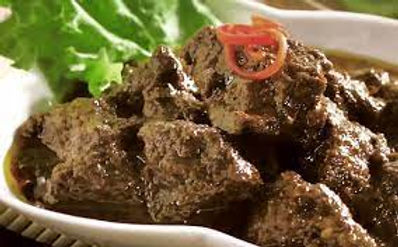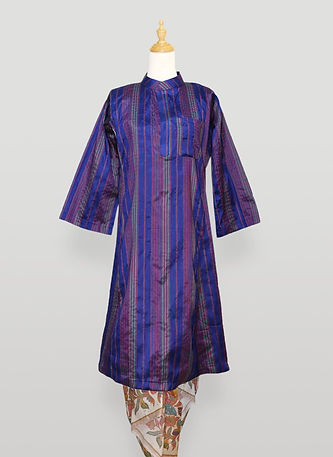

UNITY AS MALAYSIAN

Pahang

THE CALTURE ABOUT PAHANG ON ACCENT.

THE CALTURE ABOUT PAHANG ON DANCE.
The Malay language spoken in Pahang is broken into a number of dialects. Pahang Malay is the most common Malay dialect spoken along Pahang's enormous river systems, yet it coexists alongside other Malay dialects that have been spoken in the state for centuries. Terengganu Malay is spoken in a thin strip of occasionally disjointed fishing villages and towns along Pahang's coastline. A separate Malay variety spoken on Tioman Island is most closely related to the Riau Archipelago Malay subdialect spoken in the South China Sea's Natuna and Anambas islands, forming a dialect continuum between Bornean Malay and Mainland Peninsular/Sumatran Malay. Immigrants from other Malaysian states speak Kelantanese and Kedahan, as well as other Malay states dialects.
The majority of Orang Asli languages, largely belonging to the Aslian branch of Austroasiatic, are spoken in Pahang, including Semai, Batek, Semoq Beri, Jah Hut, Temoq, Che Wong, Semelai (despite being classified as "Proto-Malay"), Temiar, and Mendriq. Proto-Malay languages, which are a branch of Austronesian, are also spoken, primarily Temuan and Jakun.
Malaysian Chinese speak primarily Chinese dialects from China's southern provinces. Mandarin, Hokkien, Hakka, Cantonese, Hainanese, and Fuzhou are the most common Chinese dialects in the country.
Tamil is mostly spoken by Tamils, who make up the majority of Malaysian Indians.
PAHANG ACCENT
Joget Tari Lenggang
Tari Lenggang Joget ", also known as " Joget Pahang ", is a traditional folk song penned by Tan Sri P Ramlee for the 1956 film Hang Tuah, in which his character Hang Tuah sang the song in the palace dance sequence. Many singers across the country have covered this song since then. Joget Tari Lenggang is a traditional Malay rhythmic song that is sung vigorously, filled with lyrics written by Dato Jamil Sulong that show the characteristics repetition in each stanza, and literally tells the story of a trader who wandered from Melaka to Pahang with chestnuts purchased in Johor, expecting a warm welcome from the people of Pahang, as well as praising the peace of the Pahang state he visited. This demonstrates that Pahang has several distinct characteristics.

Balai Dance
The Semelai Orang Asli group in Bera District, Pahang, has inherited the Balai dance. There are various tunes and dancing styles in this dance that connect to a celebration or goal. For instance, ceremonies, wedding celebrations, circumcision ceremonies, and medical ceremonies. This dance is usually performed in a Balai, a home or hut with no walls and simply a bamboo floor.

Keludang Dance
Visitors to the Jakun Orang Asli settlement in the Orang Asli Gumum hamlet, Tasik Chini, Pahang are greeted with the Kelundang Dance. The dance takes its name from a kelundang tree trunk that is cut and hanged at a height of two feet, as well as tapped and generates sound as accompaniment music.
At least 15 persons, including dancers, musicians, and singers, participate in this dance, which is based on the basic movement of Sewang dance. Simple, circular, and extended floor pattern. During the concert, the singers performed in Jakun, with songs honouring the visitors and describing Lake Chini's beauty.


THE CALTURE ABOUT PAHANG ON TRADITIONAL FOOD.
Sambal
The majority of sambals in Pahang are produced by hand with a mortar and pestle. Fresh food is combined with perennial spices and fermented ingredients from the state. Sambal Pahang, sambal hitam, sambal tempoyak, sambal hitam belimbing and sambal belacan are all popular sambals. Traditional Malay recipes benefit greatly from the use of condiments. These fiery ingredients give each dish a kick while also complementing the diverse flavours.
Apart from being used as a flavoring in food, bamboo starfruit can also be made into sambal known as sambal hitam among its fans and is delicious to eat with white rice, glutinous rice, pancakes and the like. If the black starfruit is used, the sambal produced must have a black 'face', but the delicious taste is a must.


Ikan Patin Tempoyak
Tempoyak is made from the flesh of durian fruit. The contents of the durian are separated from the seeds and added with a little salt and stored for three to five days at room temperature for the fermentation process. Tempoyak is usually not eaten alone but is often made into sambal or included in dishes such as tempoyak catfish curry or tempoyak fish pies. Tempoyak is very popular in Pahang and Perak, even in Temerloh, Pahang itself tempoyak cooked catfish curry is very popular.
Opor
Opor is a watered-down variant of a qorma that originated in Javanese cooking and has made its way into Pahang cuisine. This mild stew is frequently made with pork and coconut milk. Opor Burung Puyuh (quail) is a must-try dish that goes well with Nasi Kebuli (spiced rice similar to biryani) and Paceri Nenas (pickled pineapple).
This opor uses meat as the main ingredient. It is a tradition of the state of Pahang, and requires a lot of patience to produce this dish. The time taken is between five to six hours to complete. This dish uses thick and liquid coconut milk and special opor spices that give it a spicy, playful and sweet taste.


THE CALTURE ABOUT TERENGGANU ON TRADITIONAL CLOTHES.
Baju Kurung Riau Pahang
According to its history, it was introduced by Tengku Ampuan Mariam, the daughter of Sultan Ahmad Al Muazzam Shah, the First Sultan of Pahang. It is the result of the relationship between the Riau and Pahang governments through the Royal marriage relationship.

Pahang State Peranakan Chinese Clothes


Kurung Pahang
Baju Melayu Teluk Belanga

THE CALTURE ABOUT TERENGGANU ON TRADITIONAL GAMES.
Hencang Buah Keras
For hundreds of years, Pahang Malays have played Hencang Buah Keras. It was famous from Sultan Ahmad Al = Mu'adzam Shah's (1882-1914) reign until Sultan Abdullah Al -Mu'tassim Billah's reign (1917 -1932). The game was still being played in certain areas in the late 1960s. This game is occasionally played, and one bet can take weeks to finish. The game is played between two teams, each with two punters attempting to punch the opponent's hard fruit until it breaks.
_jfif.jpg)

Batu Serembam
Selambut, also known as Batu Seremban or Serembat, is a Pahang-based traditional game. On the north and east shores of the Peninsula, the game is known as Selambut, whereas on the west coast, it is known as Seremban. It is mainly played by girls in pairs or in groups of two to five. A few bits of fruit, glass marbles, rubber seeds, pebbles, or other round-shaped pieces of widely used objects, usually up to five, are all that is required for the game. The game is frequently played in leisure time, on the front porch, inside, in the garden, or anywhere else with a level and clean surface. The players will take turns sitting on the floor and playing.
Gasing Pangkah
The game of top pangkah, which was popular during Sultan Ahmad Al-Muadzam Shah's (1863-1914) rule until it was passed down to his son, Sultan Mahmud Shah II (1914-1917), is still popular among Pahang residents. Because of its unusual shape, the top of the cross is an enemy of the top of the marker. There are two types of tops: cross tops and uri tops. Cross top is a game in which you toss the top of your opponent. Topaz uri is put to the test to see how long it can twist.


